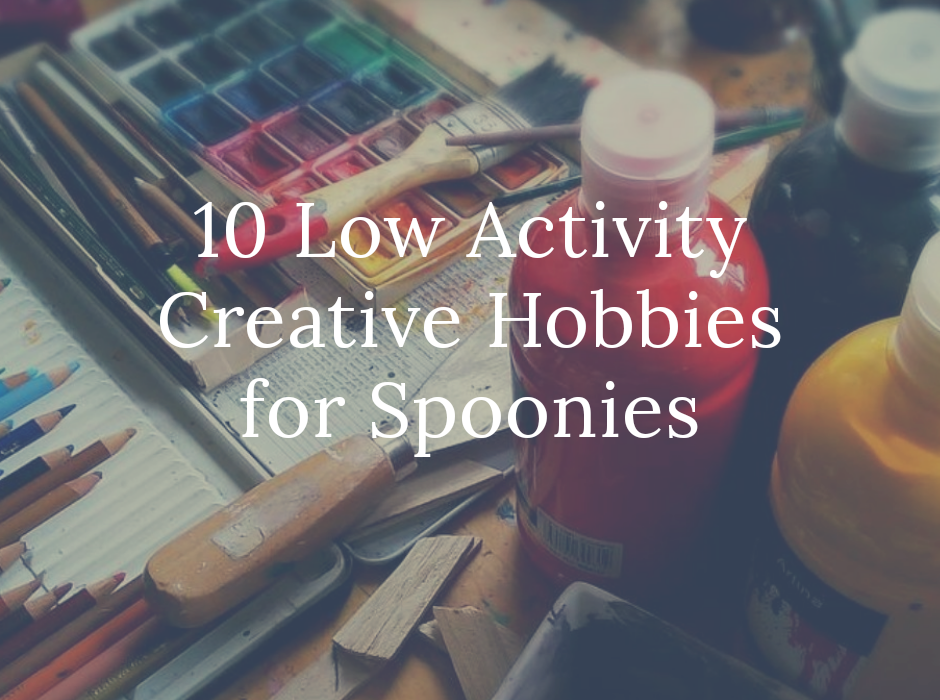
In my recent post; Enhancing your chronic life through creativity I discussed the many rewarding benefits of exploring creativity when living with chronic illness;
“Developing a creative outlet is an essential aspect of our emotional and psychological wellbeing. Having projects or hobbies to consistently work on and dedicate our time to gives us a sense of purpose. Creative activities not only give us a way to fill out never-ending days, but they also offer many benefits to our health and wellbeing.”
But living with chronic illness often leaves us with limited spoons, which restricts what we are able to do. So, with this in mind, I have compiled a list of low activity creative hobbies that can be enjoyed even on our bad days.
First I would like to explore ways to get inspired, and to embrace creativity.
Finding your creative expression
Although all of us hold huge creative potential, we often lack the confidence to take the first step. This may be due to the way society perceives people who pursue creative endeavours, or it may just be that we haven’t allowed ourselves time to explore our creative side in the past.
But starting a creative activity doesn’t have to be scary. It can begin with simple steps, and who knows where this exploration will take you.
If you feel out of touch with your creative side and want to develop a practice that’s right for you, it’s important to reflect on what inspires you and evokes an emotional reaction. Maybe create a journal with a few ideas?
Get inspired. If at first you are unsure what to try, get inspiration from online resources like Pinterest and Facebook groups. Spend some time browsing the many ideas on offer to you. Also, speak to friends – you may find a common interest and bond that you never knew you had.
Do what you love. Remember this is fun. It shouldn’t be a chore, so pick something you enjoy.
Play to your strengths. If your chronic illness limits your activity, then focus on what you can do rather than what you can’t do.
Adapt the activity if required. Just the same way you can adapt everyday tasks to fit around your disability and limitations, you can do the same for many creative activities.
Don’t be afraid to try something new. You don’t have to be good at something to enjoy it. Please don’t be afraid to try something new just because you think you might not be good at it. Also, don’t worry about what others think, this is your time to integrate self-care into your day.
Share your new found passion. Once you have embraced your new creative hobby, why not share it with your friends and engage with online creative communities. A common bond with others can inspire us and also boost our confidence.
10 Low activity creative hobbies
So, as promised, here are a few creative ideas from my followers to give you a bit of inspiration. I would like to say a big thank you to everyone who contributed.
1. Drawing and painting
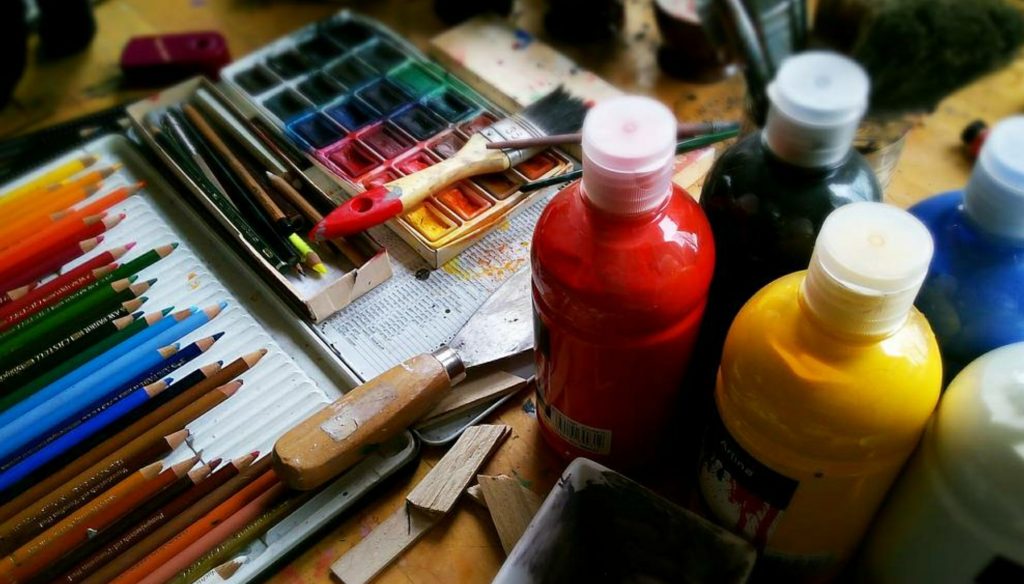
One of the simplest ways to express yourself creatively is through drawing or painting. I know a lot of us can feel intimidated when starting something new, especially if we don’t see ourselves as particularly creative or artistic. But it doesn’t have to be complicated – I enjoy doodling and simple sketches. Here are a few of my followers who enjoy drawing and painting:
“After stopping work, my self-confidence was at a low, and I enrolled in an art class. I had argued with the teacher that I couldn’t draw. He said I could, I just didn’t know it. He believed in me and taught me to believe in myself. I now have paintings hanging on my wall!” Elizabeth Sirrell
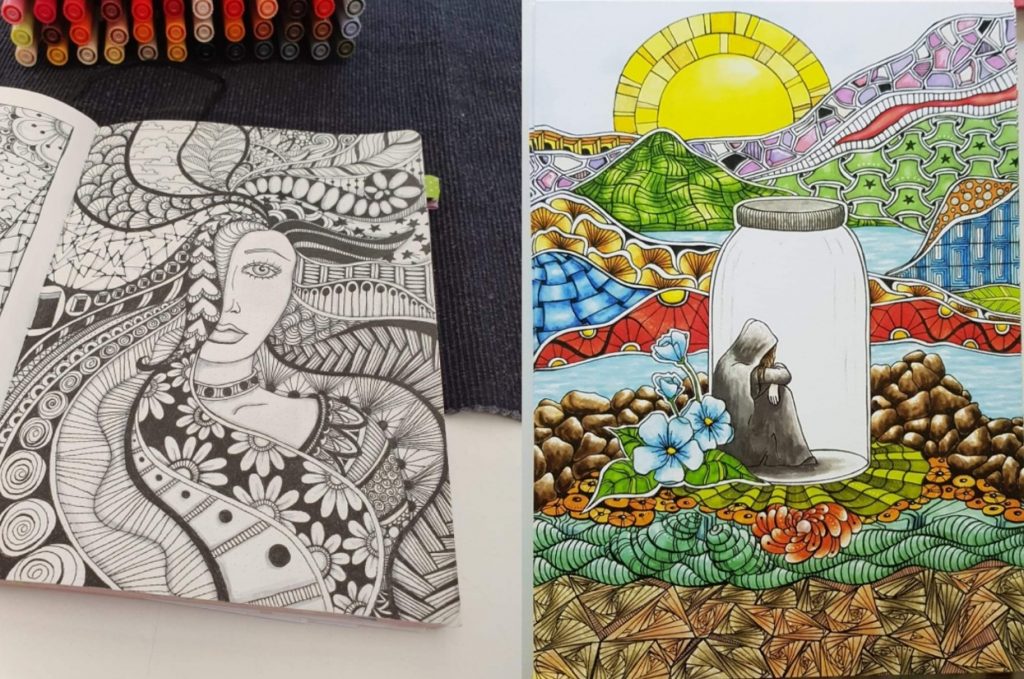
Char Schoeman likes to express her creativity through drawing and painting. Look at these beautiful images she has created.
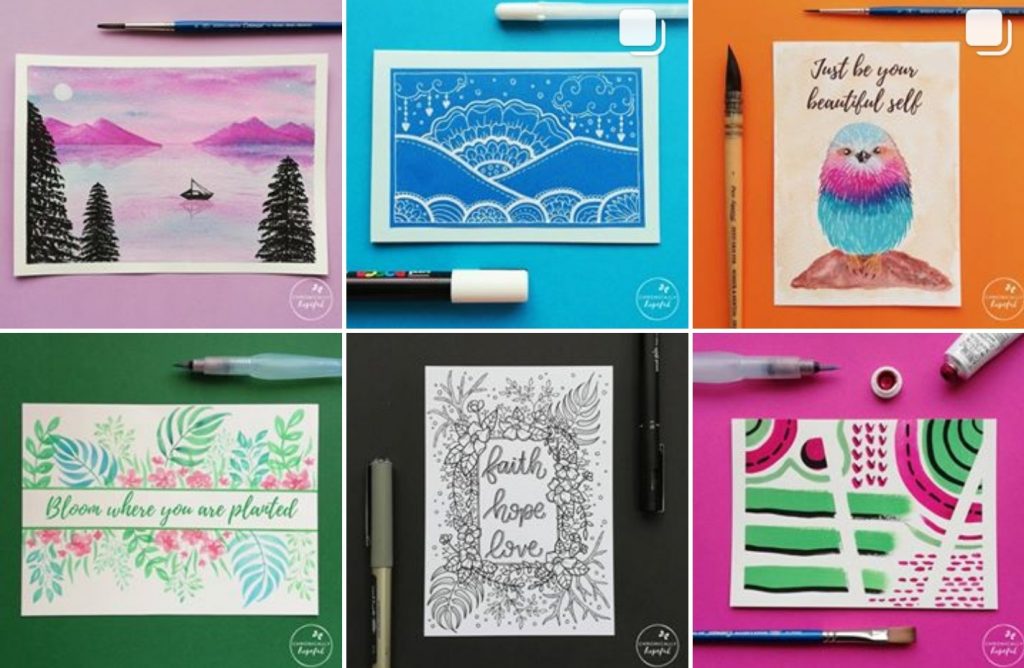
You can follow Char’s art page on Instagram at Chronicallyhopefulart.
“Drawing and painting for me!” Tracey Clark
“When I have the energy, I make fairies. Draw/paint if I need to be a little quieter. Making fairies is messy and the cleanup can be exhausting. 😅” Adele Catherine Londt
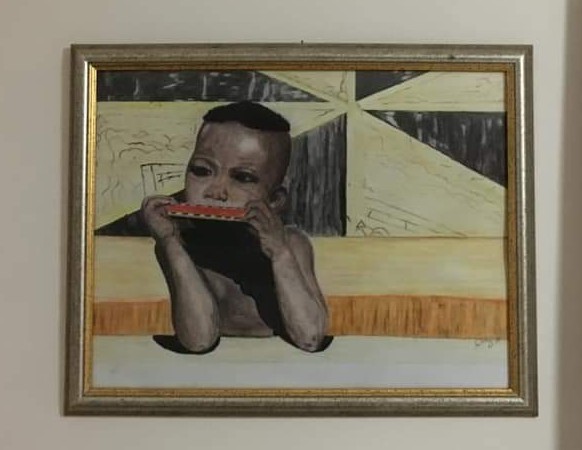
2. Crocheting
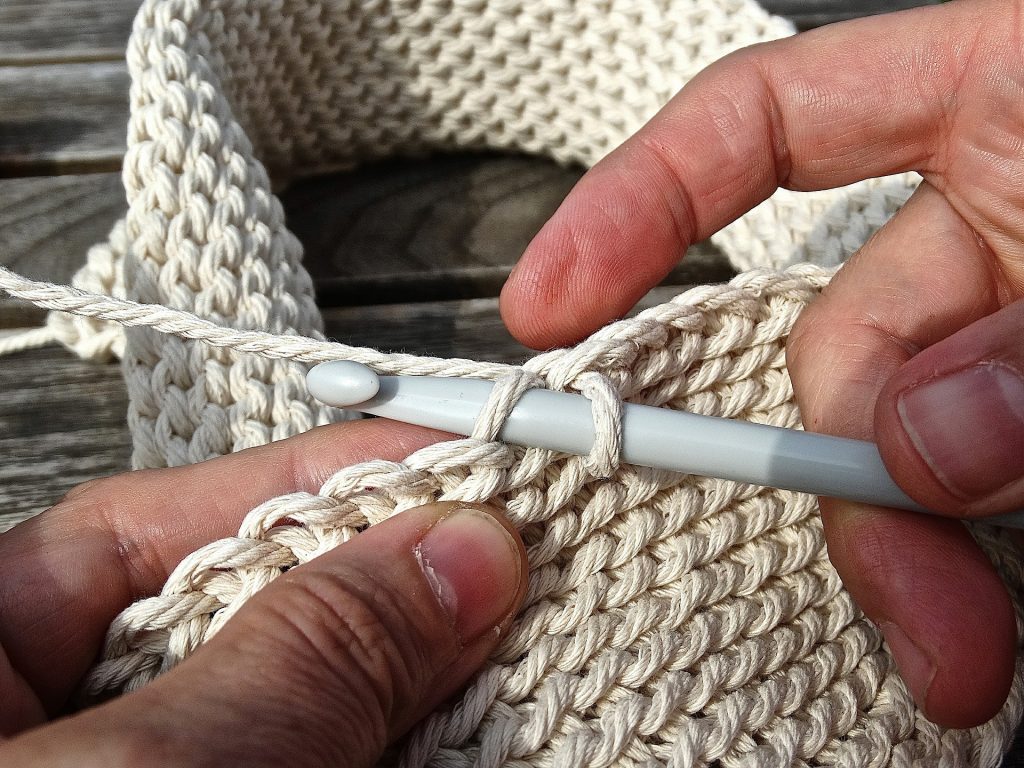
Crocheting was a popular choice with my followers as it’s an activity that can be enjoyed from bed, and requires little energy.
“I do crochet, writing and sewing. I can crochet pretty much any day as it’s something that I can do lying down. Writing and sewing take more brain power/energy, so I can only do those when I’m feeling well” Thereluctantspoonie
“Jewelery, friendship bracelets, curtains and crochet rugs … Now I can only move my hands and forearms, but I still make realistic and large cross stitch pictures. Help to occupy The hours spent in bed.” Mireia Troi
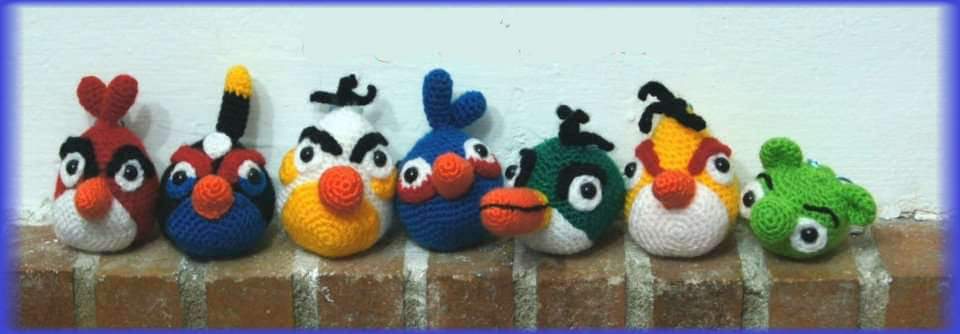
“Crochet ❤️❤️❤️ almost always have enough energy for it.” liadainod
“I’ve always enjoyed being creative, but then I’ve always had my disability. Doing embroidery, crochet etc is relaxing” Gemma Orton
3. Journaling & Scrapbooking
Journaling is a pretty popular hobby amongst the chronic illness community. It can be a great way to record your thoughts, feelings and experiences, but it can also be a practical tool used to organise your life. There is no right or wrong way to keep a journal – have fun experimenting with your creative side.
Scrapbooking is a fun and creative way to display photos and other memorabilia in an album. I have really enjoyed scrapbooking in the past, it’s a great way to preserve memories. You can be as creative as you want – and use a mixture of mediums. There are no set rules – have fun with your imagination.
Rozy Walker shared her love of journaling: “[I enjoy] Junk journaling”
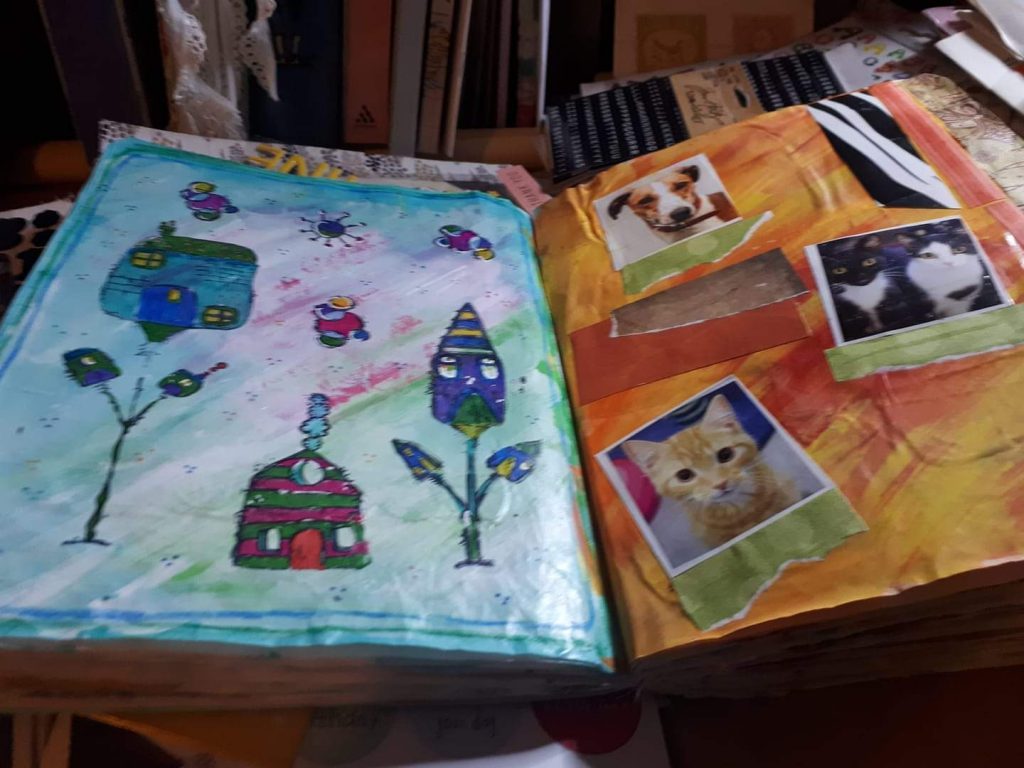
Rozy went on to explain “you use materials that would otherwise go in the bin. Packaging, paper scraps, receipts, junk mail, left over paint. It’s very freeing as it’s ok that it looks scruffy.”
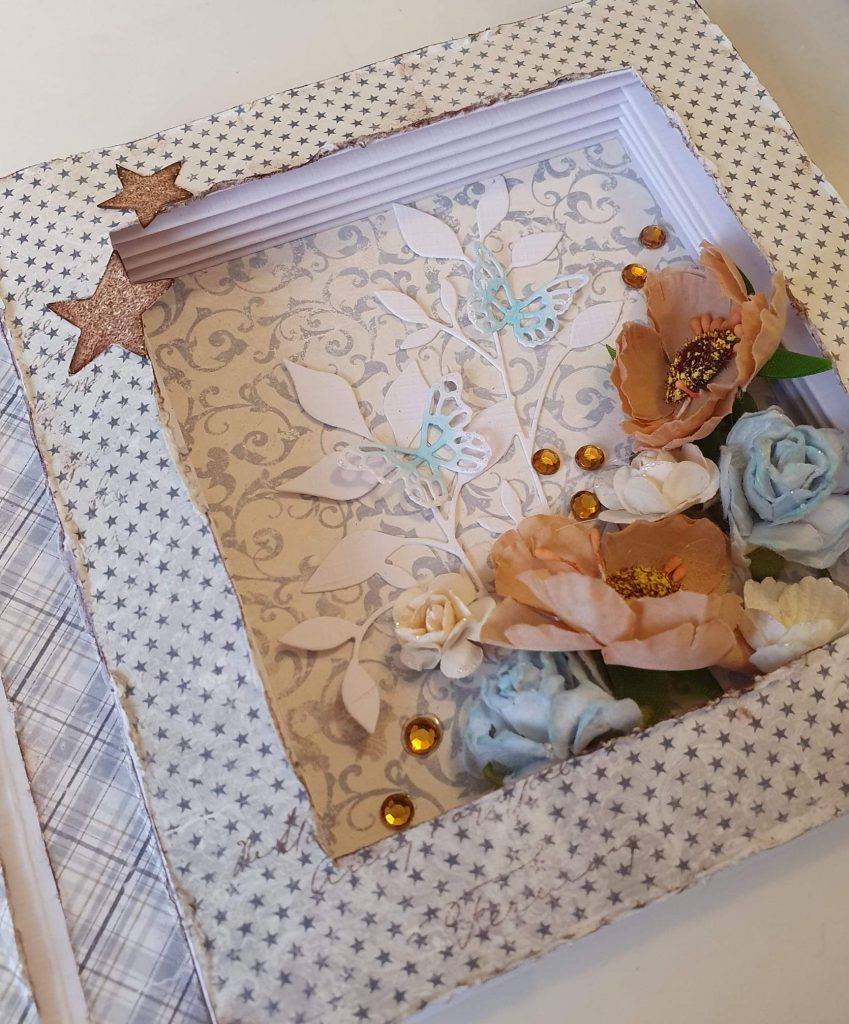
4. Writing
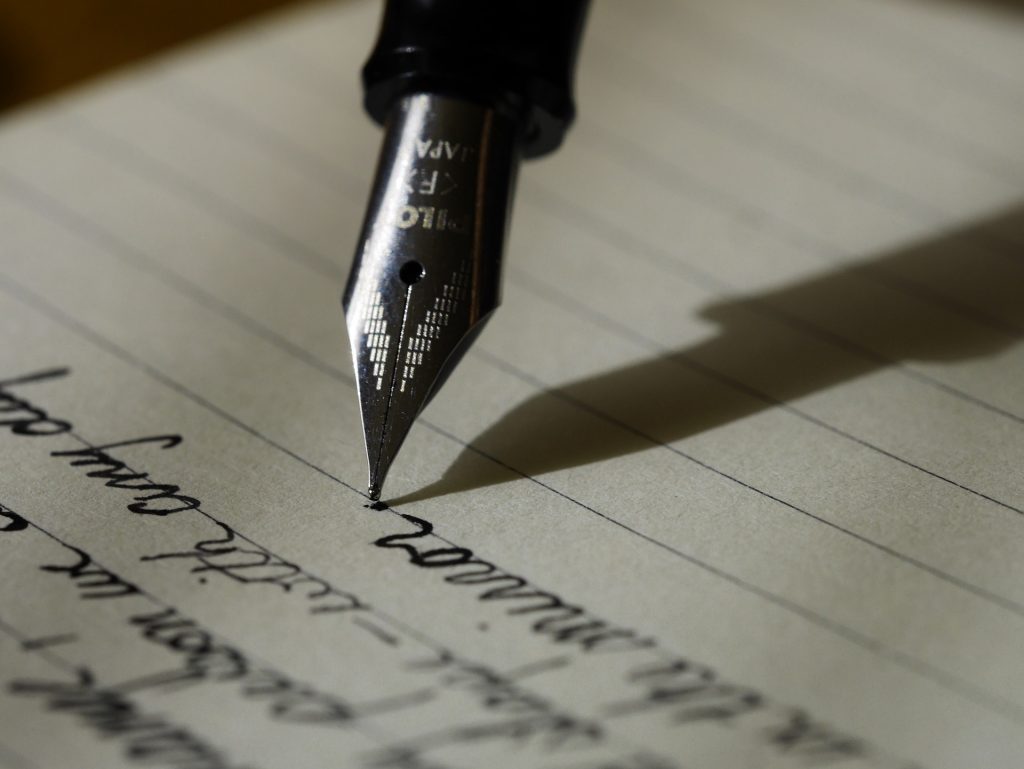
As I have discussed many times, writing has given me a great way to embrace my creativity, but it’s also very therapeutic for me and it’s enhanced my life in so many ways. I have chosen to express myself by starting a blog but this is not the only way to include writing in your chronic life. Poetry, short stories, writing lyrics or simply keeping a diary, are all great ways to express yourself. And it doesn’t have to be written word. A few of my followers enjoy writing too:
“I like writing and yoga” Through.the.fibro.fog
“I can’t ‘do’ anything, but I love playing with words and making someone laugh. Even if, some of the time, it’s only myself 🌟😃🌟” Anita Roddam
5. Make up
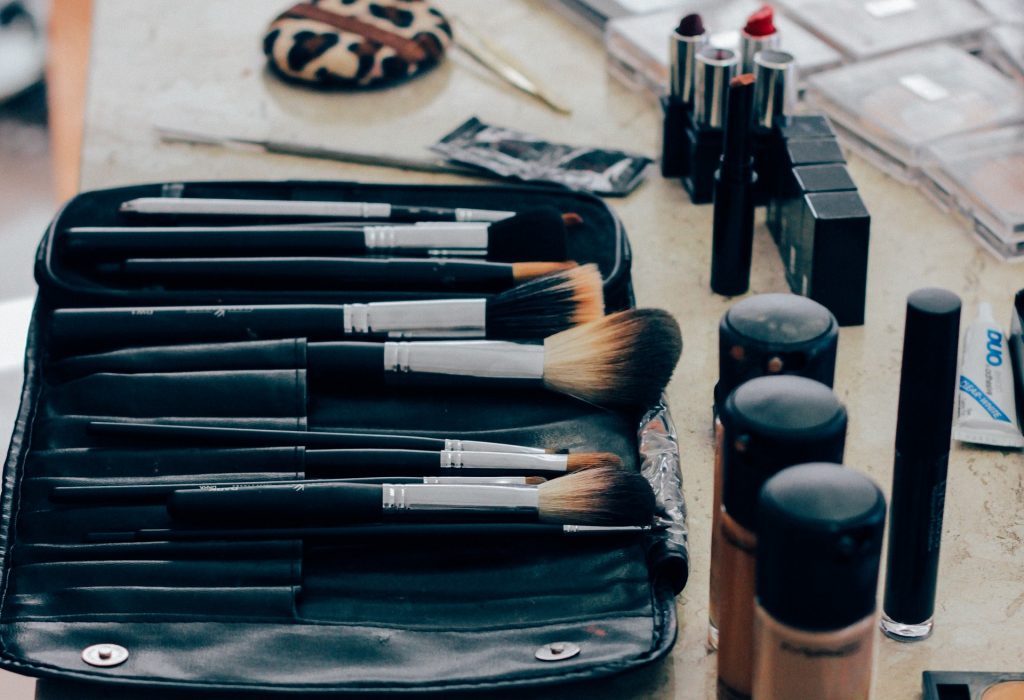
Make up isn’t something we always see as a creative hobby. It’s something that many of us practice regularly as a necessity, but it can be a great creative outlet too.
Joanne Lee explains why she enjoys experimenting with make up; “Make up is an essential everyday thing for me lol but it’s something I enjoy, I see it as ‘me time’ in the morning plus it makes me feel better/ready to take on the day.”
6. Jewellery making
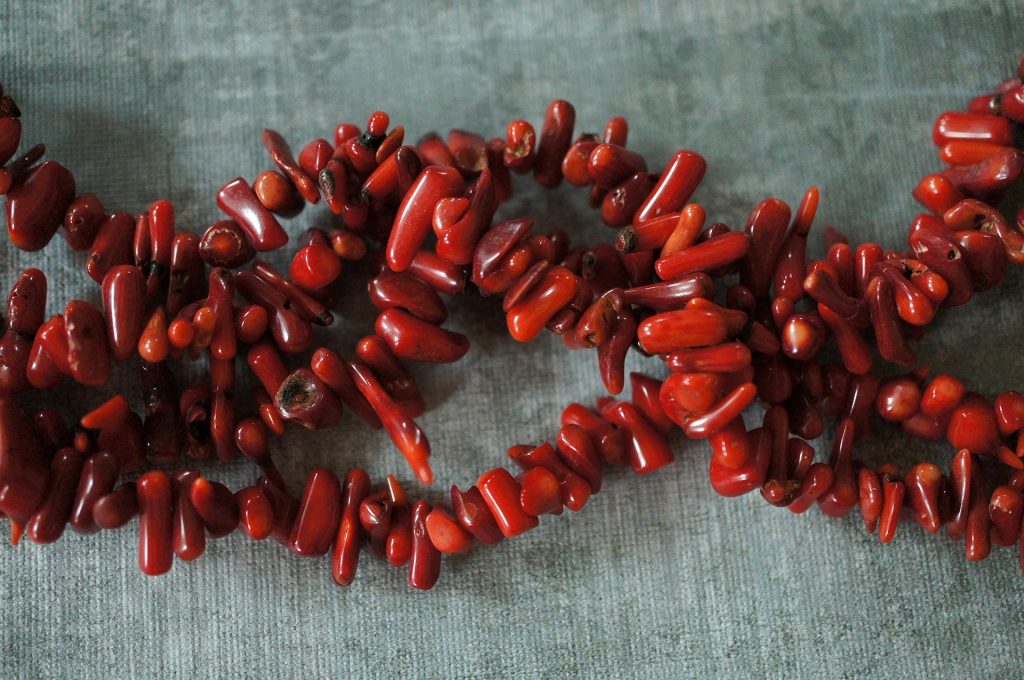
Jewellery making can be as simple or as complicated as you want to make it, depending on your ability and energy levels. Why not buy some beautiful coloured beads and string your own bracelet or necklace?

Caroline Clarke shared her passion for making jewellery; “I really love making watches 😍 [and I’m] Quite Partial to chainmaille …. When my eyes behave enough lol 😉”
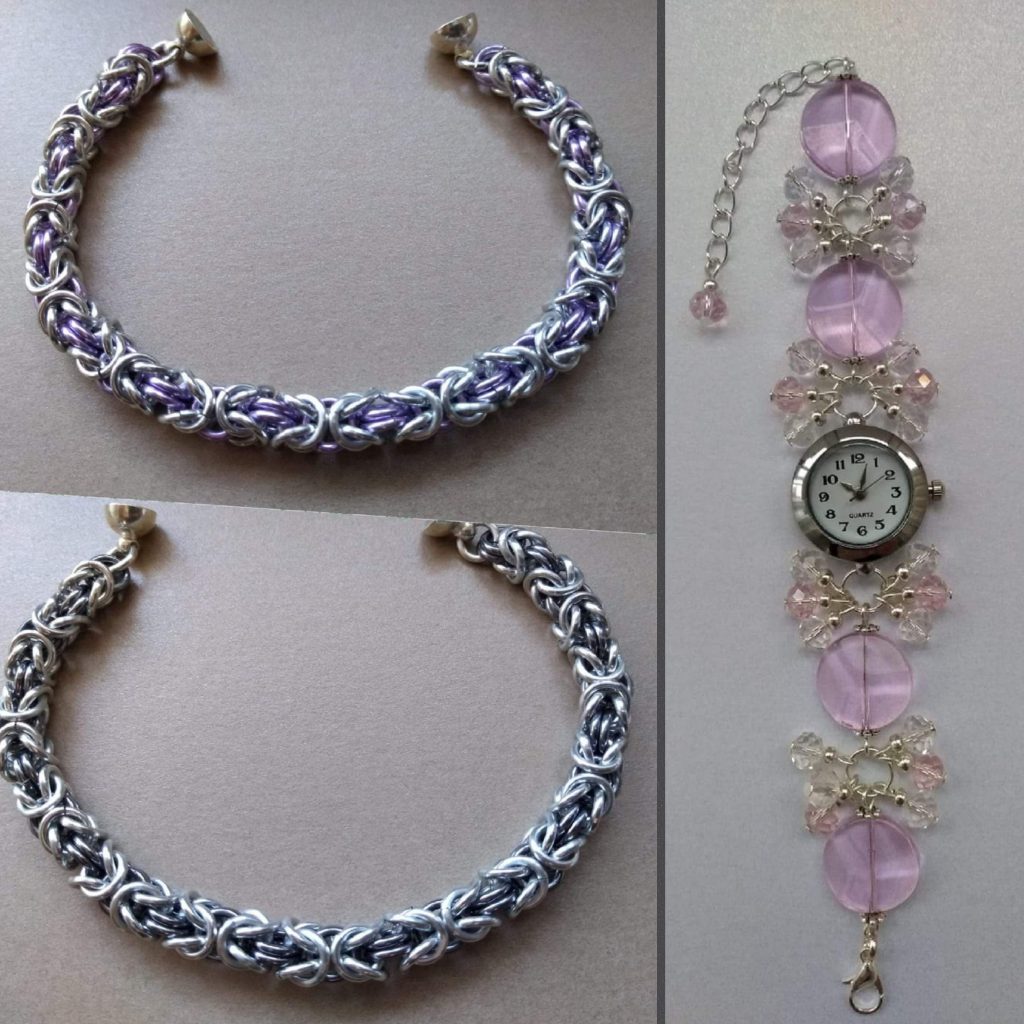
And look at this beautiful bracelet created by Tess Seren Hillier
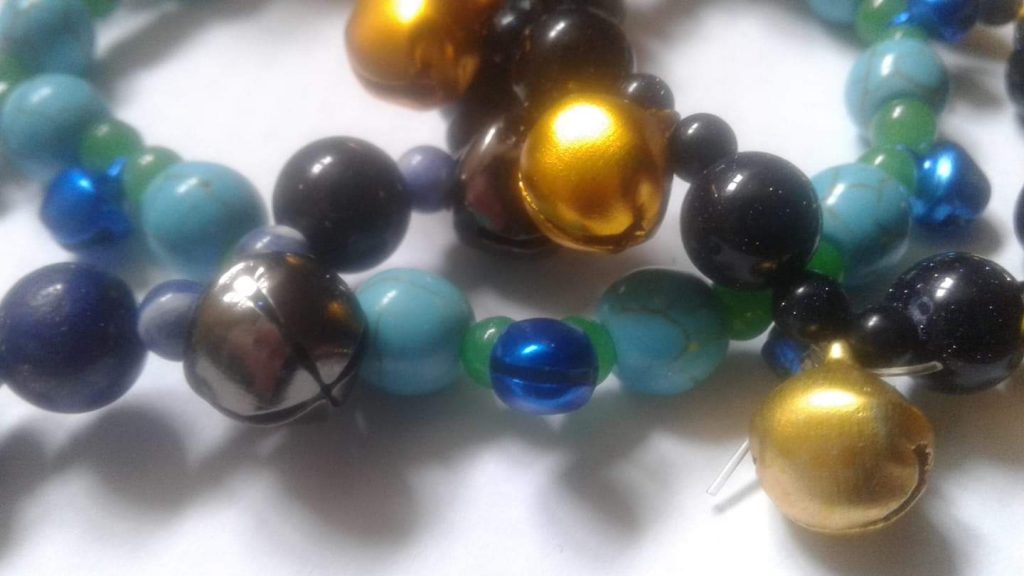
7. Card Making
Card making has brought me much comfort in the past. It can be such a rewarding hobby, but it doesn’t have to be complicated or expensive. And the great thing is you can give your creations to friends and family on their birthdays or special occasions.
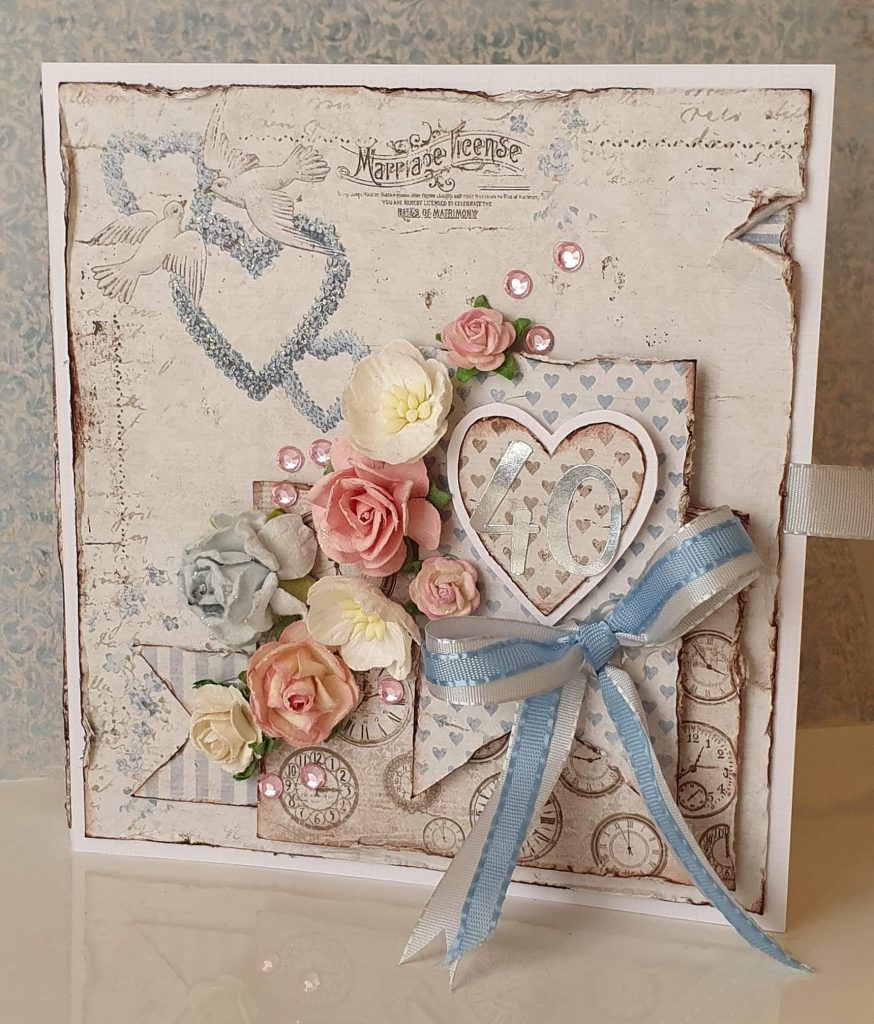
Caroline Clarke shared her love of crafts, explaining:
“Since being unwell I’ve gradually taken up more and more crafts 😁… I don’t feel like doing any some days, but when I do I can… I make cards, jewellery, crochet and now I’m learning lots about essential oils and started to make balms, roll on oils and more 😃… I love being able to craft and to give the items I’ve made to friends and family 💓…”
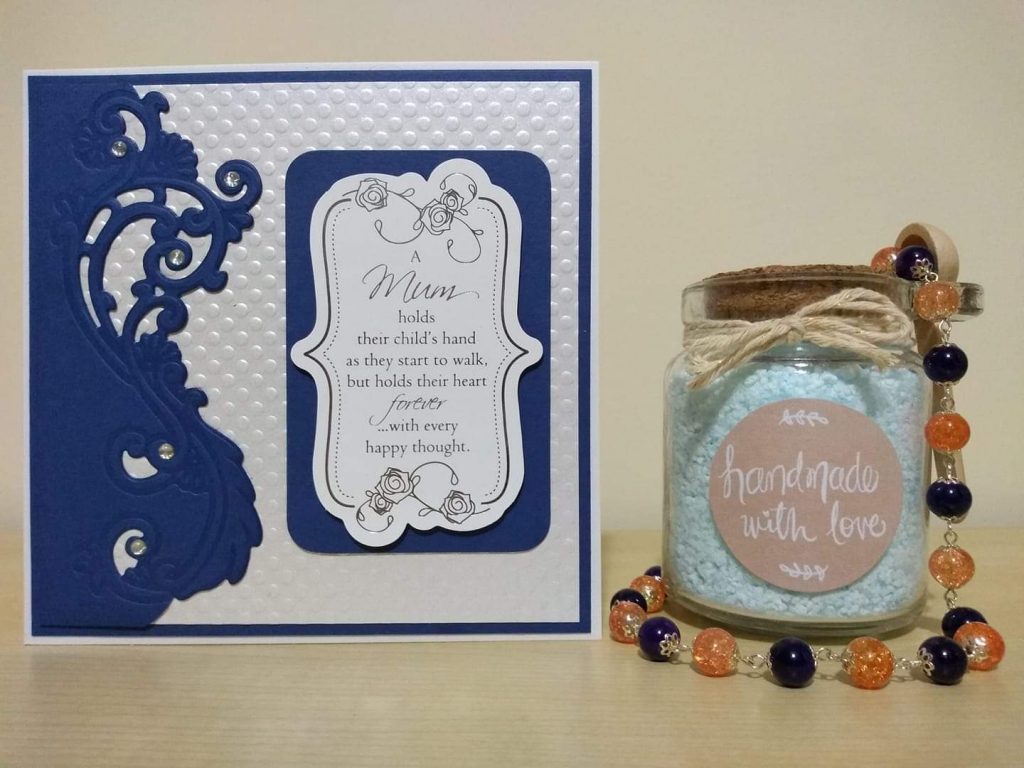
8. Sewing
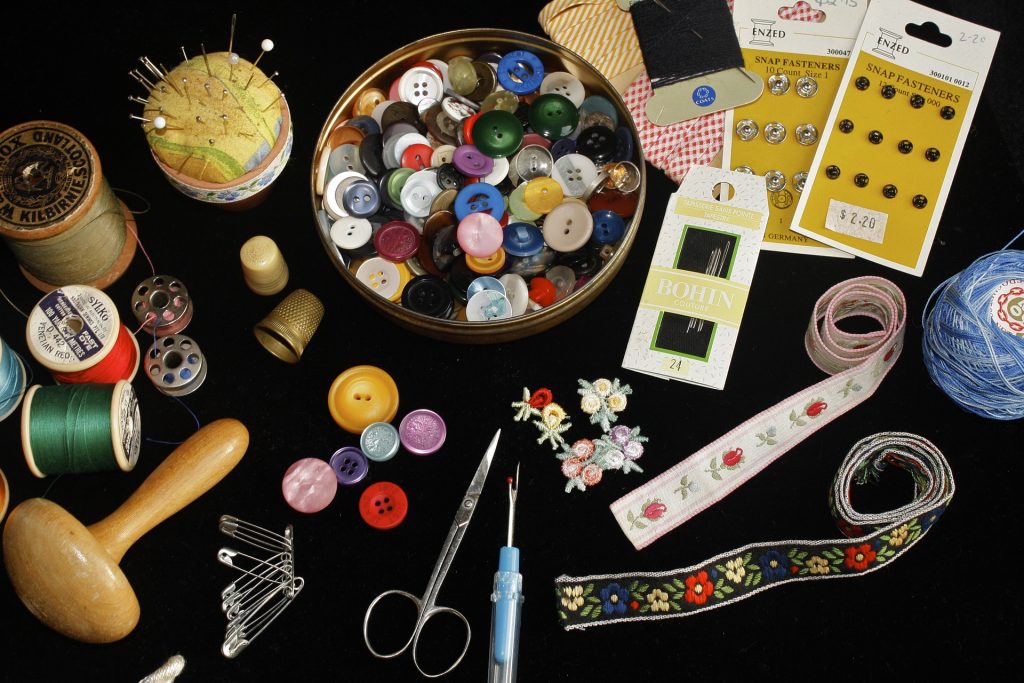
I used to enjoy machine sewing and embroidery work, but I’m unable to sit up long enough at the moment. But hand sewing items is a great low activity hobby that can be enjoyed from your bed.
“Sewing is my favourite hobby. It truly helps me cope with my fibromyalgia.” cmccall522sews
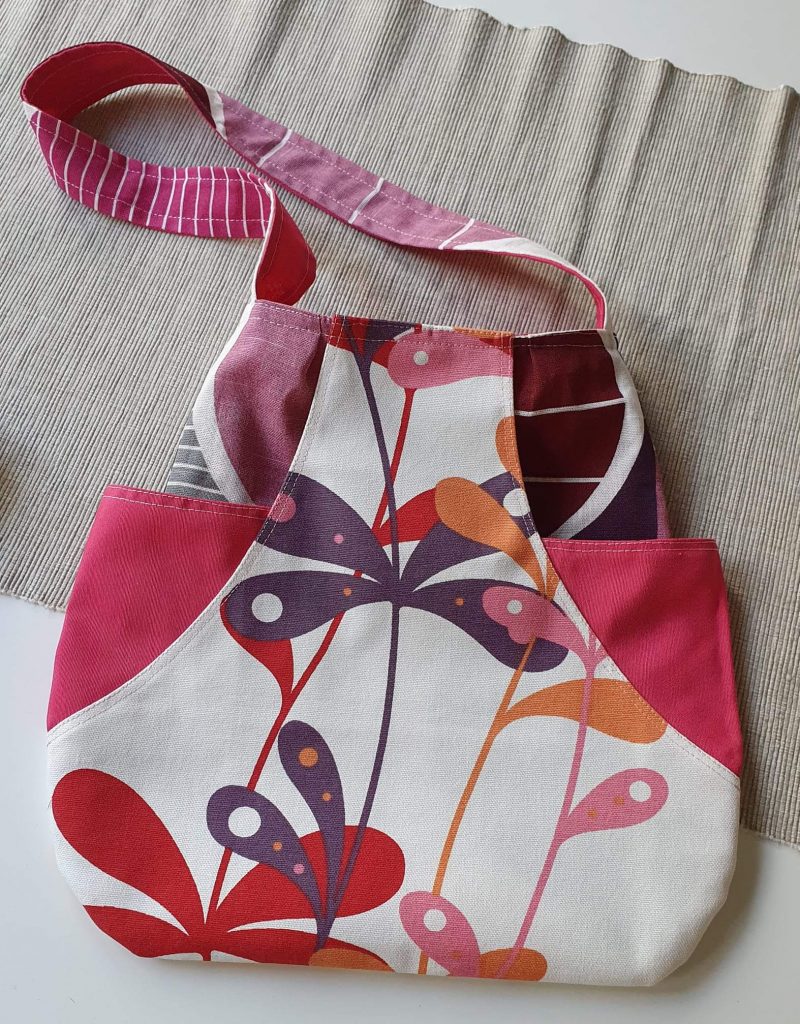
“Crafting, particularly fibre work, has truly saved me these past 5 years with ME/CFS and fibro” Miss_greenwood
9. Photography
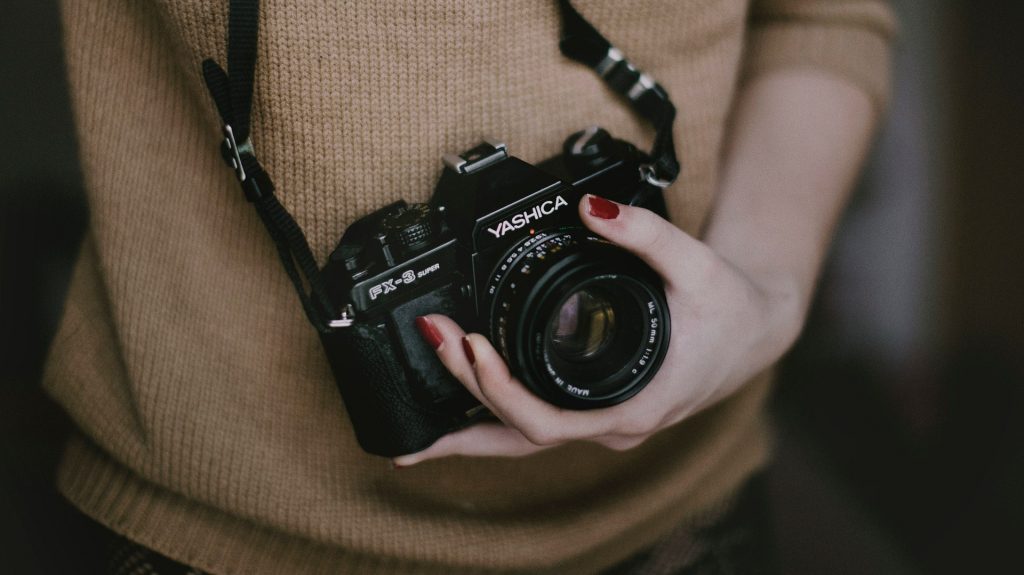
You don’t have to buy expensive equipment or travel to exotic locations to enjoy photography. Most mobile phones these days have excellent quality cameras and the great thing about photography is you can find inspiration anywhere. Why not start in your back garden? Nature is a beautiful subject.
Sophie Saunders shared this beautiful image and her love of photography:
“Photography! keeps me sane….it is something I can only really do when I am feeling ok, and I ALWAYS overdo it but I just love love love it…..after experimenting over the last 10 years with all genres, i now do mainly voluntary rescue animal photography….and our own 3 cats too of course!”
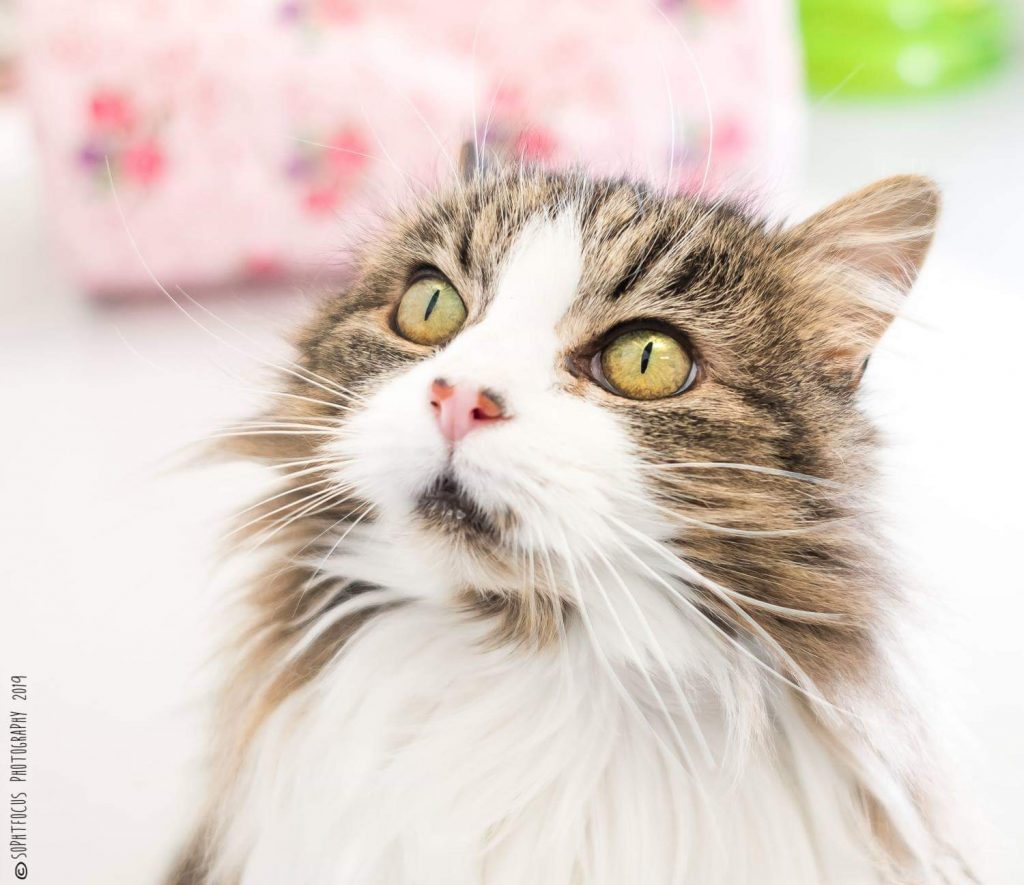
“I love too many things… crafting, sewing, drawing, photography, working on my fairy garden outside. It’s sometimes hard to sit up a long time, so it’s nice to have hobbies where I can take the breaks I need.” Chickalettachickaletta
10. Colouring
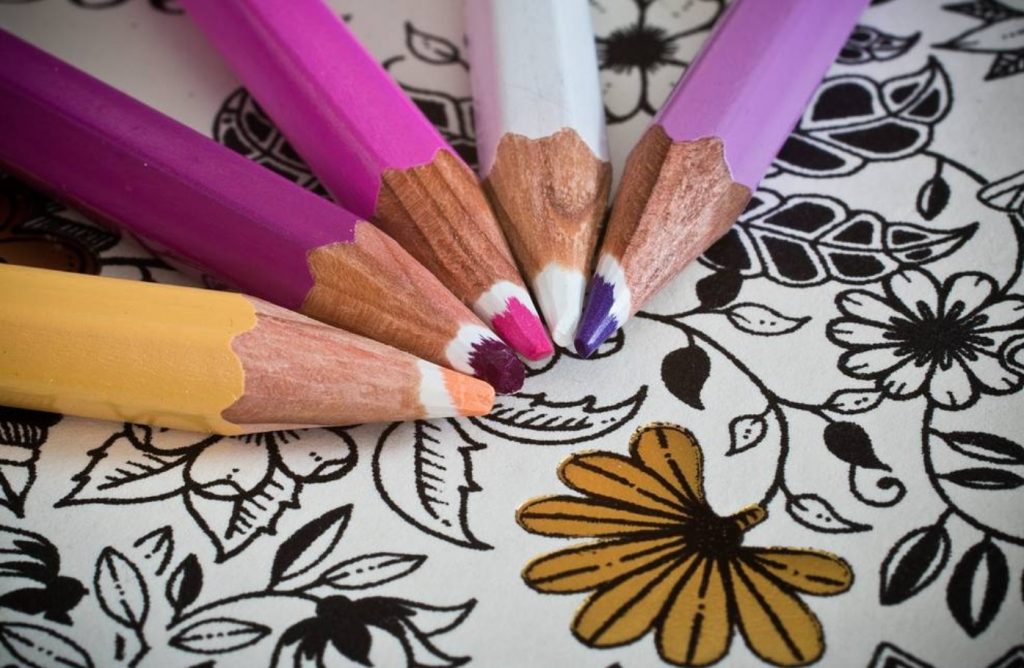
Creative hobbies do not have to be difficult. Many of us lack the confidence to start, but something as simple as colouring is a great, therapeutic and low energy way to express our creativity. There is a vast choice when it comes to colouring mediums, and they have come a long way since my childhood. You can also find apps that allow you to bring a bit of colour into your life.
Vicky Noble explains why she enjoys colouring:
“I would love to be able to draw or paint but I’m not artistic at all so I colour in!”
Vicky finds colouring relaxing, she stated “I can lose an hour or so 🙂 and it stops my brain racing!”
Although this isn’t a low activity hobby, I had to include this photo – look at this adorable clay rat created by Clare Ratty Hall
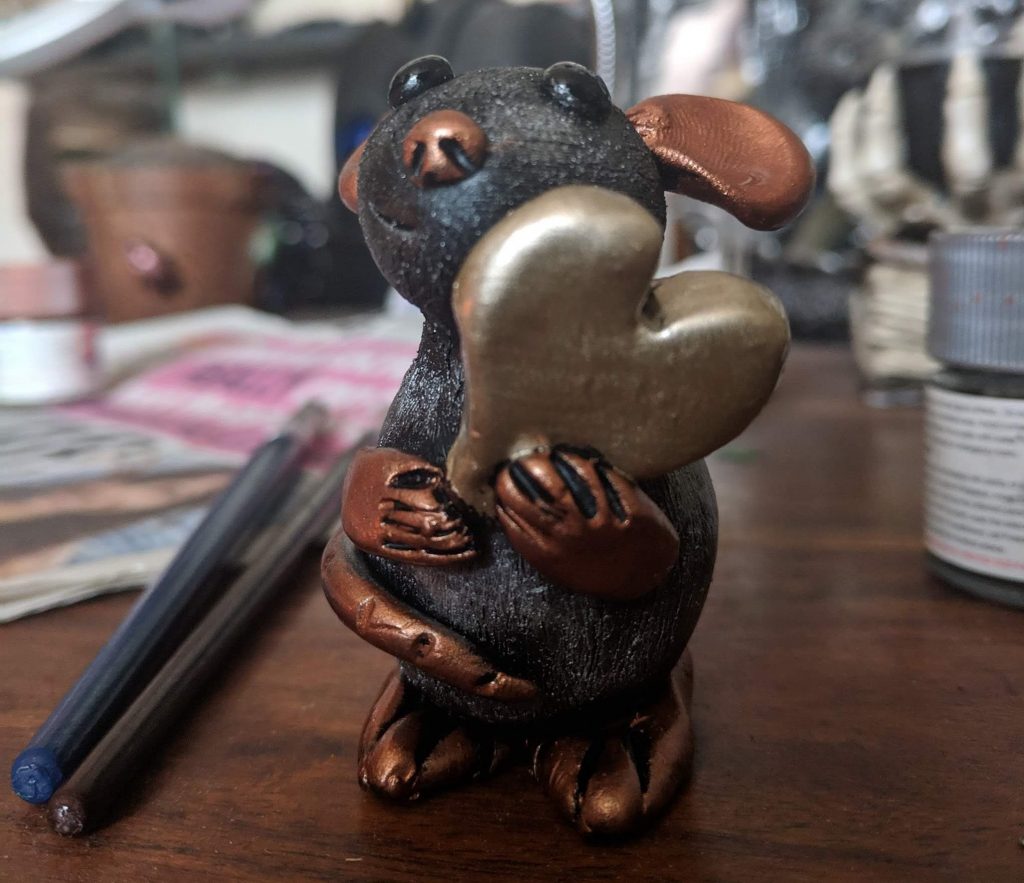
And lastly, my husband’s contribution when asked what his creative hobbies are;
“Annoying you is my favourite past time!! Lol x.” I do have to say, he’s a very talented photographer, although he is an expert at annoying me too.
Take your time – enjoy yourself
We often have to prioritise our limited energy for tasks like personal hygiene, and feel guilty when we participate in fun activities. But they are worth the boost to our mental wellbeing. So, allow yourself the time and precious energy to embrace your creativity.
Creative activities are more than just a fun pastime, they’re truly healing and restorative and are very therapeutic.
Please don’t be afraid to take the first step. Be creative, experiment with different activities, and most importantly – have fun.
What hobbies and activities do you turn to on your bad health days? What creative pursuits lift your mood?
For more personal stories, reviews, news, inspirational quotes and in-depth discussion, please head over to my Facebook page.

I know several people with chronic illness, and they all do one of the above.
I think this is a great post as it helps people realise they can do something. I write, and I also help others on forums for an interest i have which is keeping poultry.
thank you gives others ideas.
Such a lovely post. I love seeing other chronic illness sufferers’ creations.
Lovely post. Sometimes it’s hard to find energy to do anything but lots of inspiration here.
A lovely post, Jo. People really should just jump in and go for it.
Getting messy is fun, using colour is fun, whichever medium it is. It’s so relaxing and distracting too.
Thanks for the feature too, that was a lovely surprise!
You’re welcome. I love seeing your artistic creations.
I would love to be able to do more, often i can’t get out
Great post.
I enjoy being creative and always have. I find crochet, cross stitch and colouring are things I can do with no help. It’s also great for distraction and taking time out. My background at university is Art and Textiles.
Lovely post, Jo! I use colouring when I have a particularly bad pain flare – but the artistic talent skipped a generation and went to my daughter! She is currently looking at art schools for after A levels and I am hoping that EDS doesn’t slow her down too soon. I love making celebration cakes, but find the icing harder and harder with my dislocations – so I’m teaching hubby how to use a rolling pin!! Claire x
Nice post, but I can’t believe you left out knitting! (Which is totally not the same as crochet.) Since I became ill it has become my absolute passion.
I am blessed to have enjoyed crafts All my life. Being chronically ill for over thirty years have enabled me to make many gifts blankets outfits. I color and the internet makes it easy so no shopping trips.
I’ve always enjoyed crafty things, but haven’t been able to keep doing most of them as my health declined. However I am a writer by profession, and write for pleasure much more easily than for work, for lots of different reasons. When I’m first struck by an idea the inspiration flows so easily, and I enjoy it so much it’s a hobby whether I intend to publish it or not. When the initial inspiration burst has worn off is when it becomes work, and takes up much more energy. One day I’ll be able to finish something. For now writing is about the only hobby I have been able to keep up, since I find it much easier than other creative disciplines.
Lacemaking! I use thicker thread and chunkier bobbins than traditional so it’s easier to grip and see the stitches. I have a bobbin winder so I can wind them all without crashing afterwards. I’ve not managed it laying down yet, but then I’ve not managed anything laying down because lifting things up to see takes too much energy and hurts my arms. I need some kind of sloped lap tray that has enough friction to hold things on, though I’ve not had the energy to try to find one.
Also jigsaw puzzles, though it’s really easy to overdo because I’m stubborn and prone to hyperfocusing. Lacemaking is easy to overdo too, though.
I find colouring difficult; it hurts my hands and I’m always scared to start in case I do it ‘wrong’. I have little postcard sized pieces of paper I saved from a project at work (when I was much less ill, several years ago) and want to start drawing in them, maybe. They have a border, just a plain black rectangular line, which makes my brain happier than staring at a blank page.
Great post! I’ve picked up on a few ideas for my self here 😀
I cross stitch,which for those who don’t know,it seems the easiest type of embroidery to do. I’ve done all of these but I’m left with increasingly little I can do due to money constraints but this is a relatively cheap project. You can find free patterns on Pinterest and thread is cheap.
I love so many of these ideas, but I’m curious how anyone with chronic hand pain is able to do even half of these. At the moment (flare up due to weather), even typing feels achy. Keeping my eye out for something fun to do that doesn’t require my hands as much.
I’ve tried a few of these and I just can’t grasp them and haven’t enjoyed them. The others like make up and jewellery I’ve never been into.
The only thing that interests me is interiors and wanting to make my home nice. I can’t physically do things like build and painting and my husband won’t do it. So I just feel frustrated.
I’ve tried to find something else I can do that I enjoy but there isn’t anything, so what am I supposed to do?